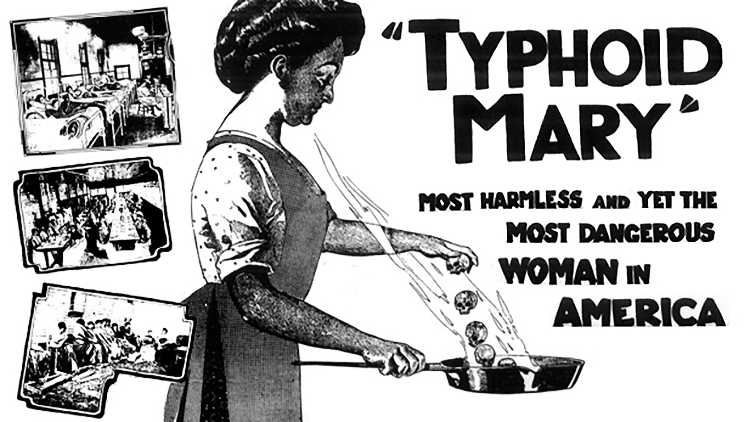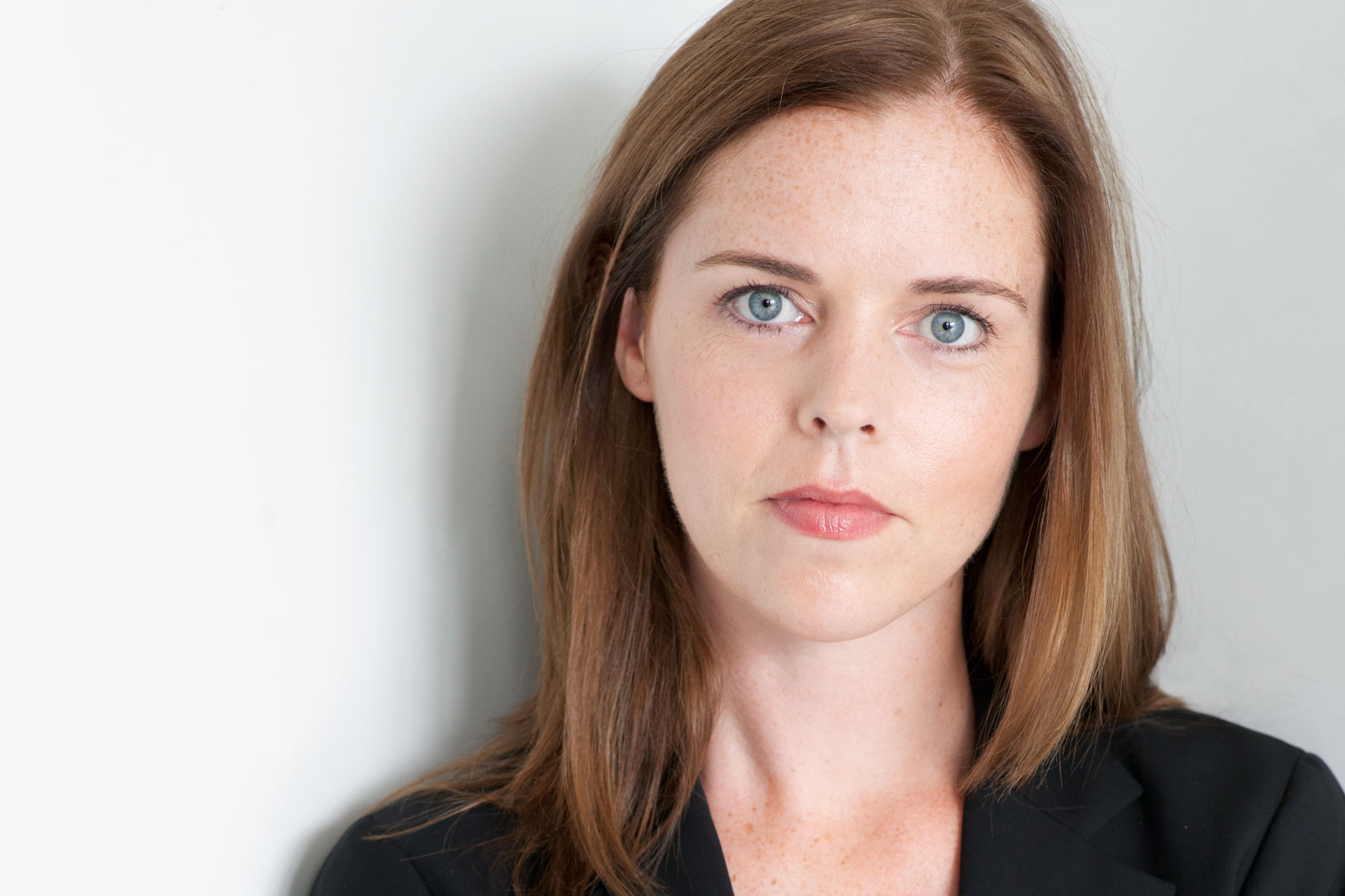Who was the woman known as “Typhoid Mary”? University of Virginia alumna Mary Beth Keane explores that question in her acclaimed 2013 novel, “Fever,” which tells the story of Mary Mallon, the first known healthy carrier of typhoid, and how she was treated by public health authorities in the early 20th century.
Actor Elisabeth Moss, currently starring in the series “The Handmaid’s Tale,” announced last week she will produce an adaptation of the novel for BBC America and Annapurna in a limited TV series and play the starring role. Moss, who was in “Mad Men” and “The West Wing” and also stars in “Top of the Lake,” bought the rights to the novel not long after it came out.
“I look forward to telling this story about one of the most infamous women in America, ‘Typhoid Mary,’ a woman whose true tale has never been told,” Moss said. “She was an immigrant in turn-of-the-century New York, a time of huge change and progress in America. She was incredibly unique, stubborn, ambitious and in fierce denial of any wrongdoing until her death, where she lived out her days imprisoned on an island just off of the Bronx. She is incredibly complicated, something I seem to enjoy playing.”

“This is happening, and I am thrilled,” Keane posted on her Facebook page about the news.
The term “Typhoid Mary,” which refers to someone who leaves disease and death in their wake, still crops up from time to time.
At the turn of the 20th century, Mallon, who worked as a cook for several elite families, among other employers, doesn’t seem to have believed she could have given anyone typhoid when she never got sick. Scientific understanding of the spread of disease was still developing. Contagion could most likely have been avoided if she just washed her hands.
Chef Anthony Bourdain wrote about Mallon after his 2000 memoir, “Kitchen Confidential,” upended culinary writing. In 2015, Vanity Fair featured a photo essay about North Brother Island, where Mallon was quarantined. She has even been reinvented as a Marvel comic villain.
“Fever” is Keane’s second novel. She graduated from UVA’s top-rated Creative Writing Program in 2005 and published her first novel, “The Walking People,” in 2009. She lives outside New York City and teaches at Barnard College. In 2011, she was named one of the National Book Foundation’s “5 under 35,” and in 2015 she was awarded a Guggenheim Fellowship.
Keane, who is working on a new novel, talked with UVA Today about this recent news, why she was attracted to Typhoid Mary’s story and what she gained from attending the M.F.A. program.
Q. How did you find out “Fever” would be turned into a TV show? That Elisabeth Moss bought the rights to the novel?
A. I first found out that Elisabeth Moss had read and admired the novel when she mentioned it in an interview with a U.K. magazine. My U.K. editor spotted it and pointed it out to me. A few weeks later, my agent heard that she was interested in optioning the rights. That was back in 2013.
In the years that passed I sort of pushed it down on my list of hopes, figuring these things are very difficult to put together – getting a director, producer, studio, actors, etc., and all willing to work on the same project at the same time. I was happy enough that she’d went as far as an option. When I heard just this week that the project was moving forward and going into production I was ecstatic. I think she’s so good.
Q. How do you feel about someone else writing the adaptation?
A. I feel mostly curious about what the writer will choose to include and what to leave out, and of course what changes she might make. Writing for screen is so different from writing a novel, and I’m glad they found someone to do it who has such good experience [screenwriter Robin Veith].
Q. Will you have any involvement with the production? Do you know anything about the timing – when it will be shot and aired?
A. This news is all so fresh, and I believe Elisabeth Moss has been in Cannes since we found out just a few days ago. There are still a lot of details I don’t know.
Q. How did you come up with the idea of writing about “Typhoid Mary”?
A. I’m continually drawn to work as a theme in fiction – what people do for a living and how that work shapes a life. People who are highly educated think of work as something we choose. What do we want to be when we grow up? To enjoy work, or to expect to have some part of our souls be satisfied by work, is a luxury of the educated, of the upper class.
Mary Mallon was immediately interesting to me because she was part of the working class, and yet she clearly enjoyed her work, got something out of it. She didn’t apologize for herself, or seem to have any desire to raise her status. The educated elite at the time didn’t quite know what to make of her, partly for that reason. When I imagined how she felt when her work was taken away from her (when she was forbidden by New York City’s Department of Health to ever cook again), I felt that loss in my own gut.
She was an incredibly complicated, vexing figure. Mostly, she got in her own way and I have a lot of sympathy for a person like that.

New York City’s Department of Health released Mary Mallon from quarantine if she promised not to cook for anyone, but she ended up going back to that work, not believing she was contagious.
Q. Your two novels have Irish characters. Can you comment on why?
A. My parents are immigrants from Ireland, so my interest in the Irish and in immigration in general comes from being the first-born child of immigrants.
Q. How was UVA’s M.F.A. program helpful to you with your writing?
A. The most important thing UVA taught me was that it’s OK to take myself seriously as a writer. I’d come down to Charlottesville from New York City, where it seemed everyone wanted to write, and so I felt like I had to apologize for joining the chorus. No one in my family was a writer; I didn’t know writers, except my professors in college. It felt a little immodest to imagine I’d ever have success at writing fiction when so many others were struggling.
Also, when I was in New York there was zero time to write as much as I wanted to between a full-time job and roommates and other obligations. What UVA offered was simple, but was all the difference: time and distance and money. For two years I stepped out of my life, put my head down, and tried to write as much as I could.
I listened to my incredibly thoughtful teachers – Chris Tilghman, John Casey, Ann Beattie, Deborah Eisenberg, all very different sensibilities – and tried to understand the various ways fiction can come alive.
The other really valuable thing I took from UVA was the friendships I made there. It’s corny, but really. I graduated from the program in 2005, but several of us from my class and the class that preceded mine still exchange work and I don’t see us stopping any time soon. We email portions of our novels to each other before we send them to agents or editors. Our friendships were forged on the mutual goal of turning out good work, the best work we can. We say the hard things to each other – when something isn’t working – but we also celebrate each other when things go well.
Q. Do you ever get back to Charlottesville?
A. Yes, I’ve been down for the Festival of the Book a few times, another time to record a Coursera class with [English professor] Bruce Holsinger. Other times just to visit friends. My husband went to Darden after I finished my M.F.A. (we got married two weeks before I started the program), and we’ve brought our kids down there several times. I was last there less than a year ago when my sister was beginning a cross-country bike trip. My husband and I love Charlottesville and often try to dream up a scheme where we can live down there again.
Media Contact
Article Information
May 31, 2017
/content/alumnas-novel-be-adapted-tv-elisabeth-moss-typhoid-mary

